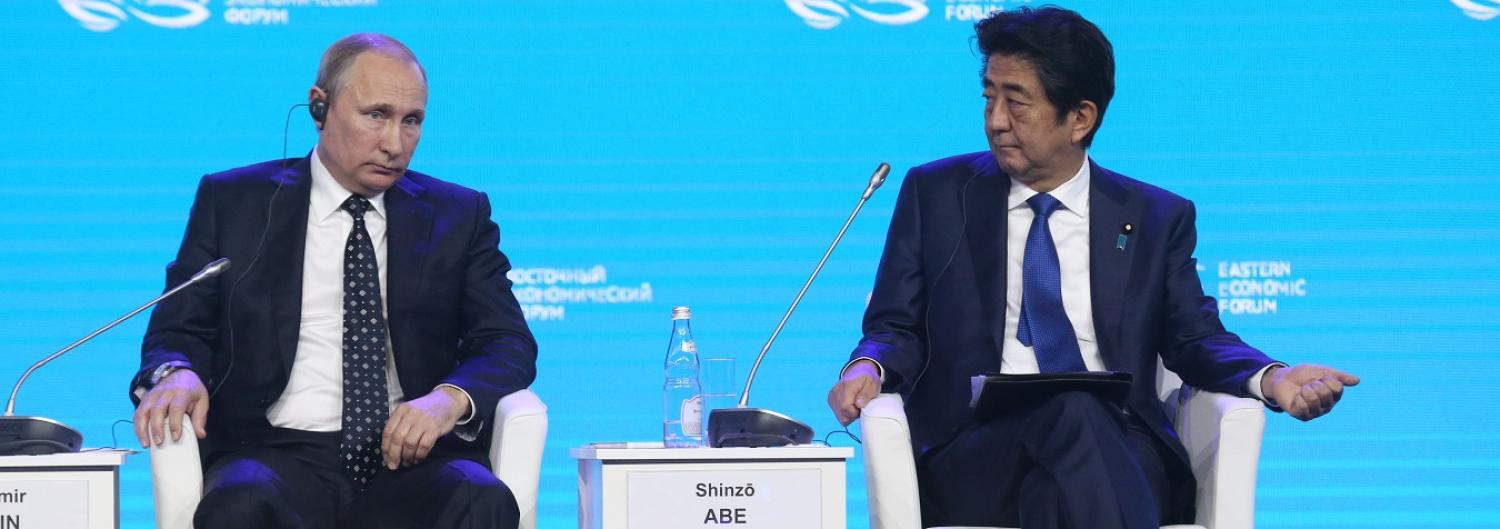Vladimir Putin’s visit to Japan later this week is not interesting in itself. Rather, it is the strategic environment in which it is happening that holds our attention. Through this visit we can discern what the world’s powers think a Trump administration may mean for them, and see how they position themselves accordingly.
Japan’s media has been in a flurry of anticipation concerning this visit, though the temperature has cooled markedly since November. After all, the two leaders have already met three times this year: Sochi in May, Vladivostok in September, and Lima in November. Putin has not visited Japan since 2005, a hiatus that Japan’s media dubs ‘the ten lost years’. Japan’s press has once again raised the prospect of a phased return of two of the four ‘Northern Territories’ (as they are known in Japan), which hopeful commentators regard as a prelude to the return of the other two islands.
There is no basis for this optimism. Putin is a strong man of politics who has shown in word and deed that territory is to be taken, not traded away. There is little doubt that Russia will welcome Japanese development and investment in the disputed islands along the lines of the eight-point economic plan released by Japan in May (which includes an LNG processing plant and other infrastructure). But it is highly unlikely that this in itself will be sufficient to persuade Russia to return Habomai and Shikotan islands, let alone promise a future return of Kunashiri and Etorofu.
Japan’s media has accordingly dialled back expectations of what will most likely be called the hot spring summit to be held in Yamaguchi, Abe’s home prefecture, on Thursday, 15 December. Now Japan’s media encourages us to expect a relaxation of visa rules to enable longer stays and multiple entries as an outcome of the visit. We can also expect announcements of investment plans by Japan and large, long-term infrastructure development in the islands. Putin will want to secure those announcements, but will seek to offer only hope for an eventual resolution to the territorial dispute in return. Abe for his part will need to be persuaded that there is a genuine prospect of a breakthrough.
For Abe, this is personal too. His father Shintaro Abe, a former foreign minister whose interlocutors were Gromyko and Gorbachev, had set himself the goal of negotiating the signing of a peace treaty between Japan and Russia, something that the territorial dispute has prevented since 1945. It was a goal that he was unable to realize before his untimely death in 1991. Since then, the peace treaty between Japan and Russia has become the holy grail of Japanese diplomacy, offering a massive legacy for whoever achieves it.
It means a lot to Shinzo Abe for another reason – Abe stakes his own diplomatic strategy on overcoming the shadow of World War II on post-war Japan’s contemporary status in the international community. Obama’s visit to Hiroshima, and Abe’s planned visit to Pearl Harbour are emblematic of this strategy. We have seen it in Australia too, when Abe addressed parliament and put the ghosts of Bataan and other horrors to rest. The success of Abe’s new proactive security policy also depends on this willingness on the part of Japan’s interlocutors to let the past rest.
When it comes to Russia, this is harder for Japan than it is for Russia. Resentment runs deep in Japan’s bureaucracy about Russia’s treachery in the dying stages of WWII, when instead of acting as Japan’s emissary to help end the war Russia invaded the northern islands. It is Japan that has to undergo the act of forgiveness, and it is far from clear whether this has actually happened yet.
But what is most interesting about the imminent summit is what glimpses it affords us of the strategic game that is about to unfold across the region and the world. By relieving visa rules, Abe is taking a step away from sanctions that the US and the EU have imposed on Russia since the incursion into Crimea in 2014. To date Japan has carefully curated an image of Japan as a defender of the liberal international system, protector of the global commons and paragon of liberal democracy. To a great extent, this has been partly in order to differentiate Japan from China in the eyes of the world.
One suspects that Abe’s coup in securing face time with Trump immediately after his election in November may have included clear questions from Abe about how President-elect Trump would view Abe’s Pearl Harbour visit, and an attempt to resolve the territorial dispute with Russia. Rather than seeking approval (or even less permission), Abe has given his US ally the heads-up that he is about to strike out more on his own. It is safe in this instance, as the US is not overly concerned about the Northern Territorial dispute. We can assume also that an eventual peace treaty between Japan and Russia would also be welcome to Trump. In addition, the signalling towards China that Japan is expanding its positive ties with regional powers will likely meet with approval from a Trump administration.
In his approach to rapprochement with Russia under Putin, Abe is starting to walk on an autonomous path as an Asian power, and as an US ally. These are baby steps, but they reflect a deeply-held conviction on Abe’s part that Japan must secure more autonomy as a power in its own right, and as an ally within the US alliance system. As the US global strategy comes under review with the advent of a Trump administration, Abe is offering us a hint of how at least one US ally may respond to the opportunity afforded by disruption.

